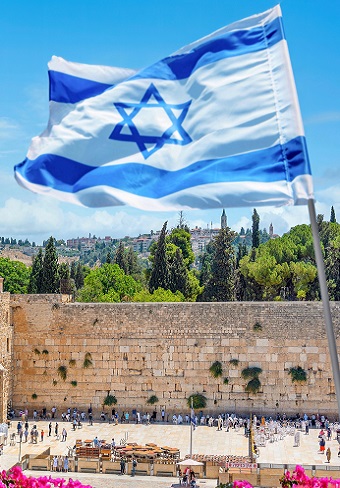Yad Vashem Holocaust Museum

Yad Vashem (Hebrew for “Memorial and name”) is the world center for the research, education, and commemoration of the Holocaust. It is far from a typical tourist attraction, yet highly recommended and one of the most powerful experiences when visiting Israel.
Visiting Yad Vashem
 Yad Vashem is at the western end of Jerusalem, next to Mount Herzl. It comprises a leading museum, several outdoor monuments, and a school and research center. It is open every day except Saturday. Admission is free. The institution’s main attraction is the main museum. Opened in 2005, it is a unique design, mostly underground, presenting in chronological order the rise of the Nazi party and how it led to the systemized mass murder of the Jews during the Second World War. The presentation is rich and diverse, emphasizing the personal possessions of the victims and recorded testimonials of survivors. The museum also commemorates the partisans who fought against the Nazis and honors non-Jews who saved Jews during the war (“Righteous of all Nations”).
Yad Vashem is at the western end of Jerusalem, next to Mount Herzl. It comprises a leading museum, several outdoor monuments, and a school and research center. It is open every day except Saturday. Admission is free. The institution’s main attraction is the main museum. Opened in 2005, it is a unique design, mostly underground, presenting in chronological order the rise of the Nazi party and how it led to the systemized mass murder of the Jews during the Second World War. The presentation is rich and diverse, emphasizing the personal possessions of the victims and recorded testimonials of survivors. The museum also commemorates the partisans who fought against the Nazis and honors non-Jews who saved Jews during the war (“Righteous of all Nations”).
- Last entry to the main museum is an hour before closing.
- Children under ten are not permitted into the main museum.
Additional Monuments in Yad Vashem
 Hall of Remembrance – A hall where an eternal flame burns in memory of the Jews who perished in the Holocaust. The names of the main concentration and extermination Nazi camps are presented around it. Beneath the names are buried ashes of the victims.
Hall of Remembrance – A hall where an eternal flame burns in memory of the Jews who perished in the Holocaust. The names of the main concentration and extermination Nazi camps are presented around it. Beneath the names are buried ashes of the victims.
Yad Layeled – The children’s memorial. A poignant, unique exhibit commemorating the million and a half Jewish children, 16 and younger, murdered in the Holocaust.
The Wagon Monument – A 1940s cattle car set on an unfinished bridge over a cliff, commemorating the deportations of Jews by trains to the extermination camps.
Valley of the Communities – A 2.5-acre monument at the western edge of Yad Vashem, presenting 5000 place names whose Jewish communities perished during the Holocaust. The massive exhibit is carved into the mountain and set like a maze, evoking eerie emotions.
Avenue of the Righteous among Nations – between the various monuments of Yad Vashem are some 2,000 trees honoring non-Jews who saved Jews during the Holocaust. Most were planted by the righteous themselves or their family members. Many visit the tree planted by Oskar Schindler, who is also buried in Jerusalem.
A tour of Yad Vashem can be integrated into a day tour of Jerusalem.










